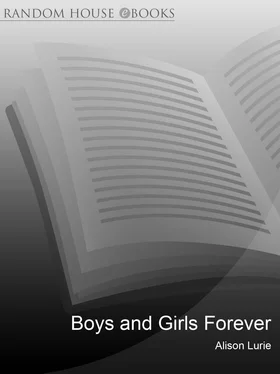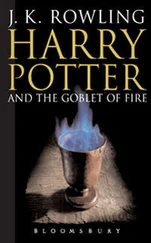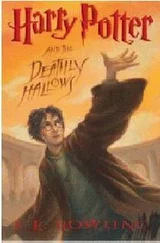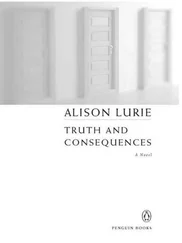There are other touches of social satire in Baum’s work, some of them, like the story of Jinjur, apparently directed more to adults than to children. In one of his non-Oz tales, The Sea Fairies (1911), an octopus bursts into tears when he is compared to Standard Oil. (Possibly it should be mentioned that Baum’s father and other independent businessmen once tried and failed to break the stranglehold of Standard Oil on local oil production.) And in The Patchwork Girl of Oz an animated phonograph named Victor Columbia Emerson who can clearly see into the future pursues the hero and his friends. In spite of their objections, Victor Columbia Emerson insists on playing an inane song called “My Lulu” over and over again:
“It’s the latest popular song,” declared the phonograph, speaking in a sulky tone of voice. . . . “One that the feeble-minded can remember the words of and those ignorant of music can whistle or sing. That makes a popular song popular, and the time is coming when it will take the place of all other songs.” 29
Though the Oz books have always been read by children of both sexes, they have been especially popular with girls, and it’s not hard to see why. 30Oz is a world in which women and girls rule; in which they don’t have to stay home and do housework, but can go exploring and have adventures. It is also, as Joel Chaston has pointed out, a world in which none of the major characters have a traditional family. 31Instead, most of them live alone or with friends of the same sex. The Scarecrow stays with the Tin Woodman in his castle for months at a time, while Ozma, Dorothy, Betsy, and Trot all have rooms in the palace of the Emerald City, and Glinda lives in a castle with “a hundred of the most beautiful girls of the Fairyland of Oz.” 32
The appeal of Oz seems even clearer if it is contrasted to that of contemporary books for girls. In the early years of the twentieth century, the heroes of most adventure stories were boys; girls stayed home and learned to get on better with their families. If they were rejected children like Rebecca of Sunnybrook Farm, or orphans like Anne of Green Gables and Judy in Daddy Long-Legs , they found or established new families. At the end of all these stories, or their sequels, the heroine grew up, fell in love, and got married.
There was of course already another famous little girl protagonist who had adventures in a magical world: Lewis Carroll’s Alice. But from the point of view of most child readers (including me) her experiences were less attractive. Unlike Dorothy and Ozma, who collect loving friends and companions on their journeys, Alice travels alone, and the strange creatures she meets are usually indifferent, self-absorbed, hostile, or hectoring. Rather than helping her, as Dorothy’s companions do, they make unreasonable demands: she is told to hold a screaming baby, do impossible math problems, and act as a ladies’ maid. One or two of the characters seem to wish her well in a helpless way, like the White Knight, whom many readers have seen as a stand-in for Carroll himself. Moreover Wonderland, unlike Oz, turns out to be only a dream.
Most children, though they may enjoy Alice’s adventures, don’t want to visit Wonderland, which is full of disappearing scenery and dangerous eccentrics, some of them clearly quite insane. They prefer Oz, where life is all play and no work, and all adventures end happily.
To some extent Baum’s endorsement of escapism was hidden—disguised as lighthearted comic fantasy, with a series of sweet, pretty-little-girl protagonists, the most famous of whom at first declares that all she really wants is to go home to flat, gray Kansas and see her dull, deeply depressed Uncle Henry and Aunt Em again. But, as anyone knows who has read even a few of Baum’s later Oz books, Dorothy may return to Kansas after her adventures, but she doesn’t stay there very long—somehow, a natural disaster (shipwreck, earthquake, whirling highways) always appears to carry her back to Oz and the magical countries that surround it. She spends more and more time there, and has more adventures. Finally, in the fifth volume of the series, Dorothy not only moves to Oz permanently, but arranges for Uncle Henry and Aunt Em (whose failing farm is about to be repossessed by the bank) to join her there. Yes, you can escape from your dreary domestic life into fairyland, Baum’s books say: you can have exciting but safe adventures, make new friends, live in a castle, never have to do housework or homework, and—maybe most important of all—never grow up.
This subversive message may be one of the reasons that the Oz books took so long to become accepted as classics. For more than half a century after L. Frank Baum discovered it in 1900, the Land of Oz had a curious reputation. American children by the thousands went there happily, but authorities in the field of juvenile literature, like suspicious and conservative travel agents, refused to recommend it or even to handle tickets. Librarians would not buy the Oz books, schoolteachers would not let you write reports on them, and the best-known histories of children’s books made no reference to their existence. In the 1930s and 1940s they were actually removed from many schools and libraries. As a child I had to save my allowance to buy the Oz books, because the local public library refused to carry them. This censorship was justified at the time by pointing out that the books were not beautifully written and that the characters were two-dimensional. This is arguable, but it has not prevented many other less than stylistically perfect children’s books of the period from being admired and recommended. It seems more likely that in the dark years between the first and the second waves of American feminism, critics recognized the subversive power of Baum’s creation.
Not until recently did the Oz books enter the canon, and in some communities they are still under attack. Fundamentalist Christians have complained that The Wizard of Oz contains two good witches (to them, an oxymoron) and also that, “in Oz, females assume traditional male roles, and animals are elevated to human status.” 33Apparently, if you believe in creationism, characters like the Cowardly Lion and Billina the hen, who not only talk but give good advice and help defeat evil, are a serious threat.
Yet these Ozophobes, like the Nomes, are clearly on the losing side. A new edition of Michael Patrick Hearn’s exhaustive and entertaining Annotated Wizard of Oz has appeared; and there is now an International Wizard of Oz Club with headquarters in Kinderhook, Illinois, a name that Baum himself might have invented. In July 2000 more than four hundred fans, many of them in spectacular costume, gathered in Bloomington, Indiana, to celebrate the hundredth anniversary of Oz. They shared a five-foot-high green birthday cake in the shape of the Emerald City, and watched the current Wizard (a professor of orthodontics from San Francisco), accompanied by nine plastic pigs, take off in a giant gas balloon.
IS THERE ANYBODY THERE? WALTER DE LA MARE’S SOLITARY CHILD
LIKE many famous writers for children, Walter de la Mare had an idyllic early childhood that was cut short too soon. His first nine years were spent in a large, happy family in the outer suburbs of London, at the edge of the countryside he loved. But at ten he became a chorister and boarding student at St. Paul’s Cathedral school in central London. The boys there studied and practiced and performed seven days a week, with only one hour of freedom a day. Soon memories of his early life began to fade; later he would write that “those happy, unhappy, far-away days seem like mere glimpses of a dragon-fly shimmering and darting.” 1
For the rest of his life de la Mare would try to recapture this dragonfly. He would also continue to believe that it was better to be a child than an adult. At thirty-one he wrote to a friend that growing up “is a fiasco I am more convinced every day.” 2When he was seventy-five, his biographer, Theresa Whistler (then twenty-one), “protested against this wholesale dismissal of adult life.” De la Mare, who had known her since birth, insisted that he was right. “Take your own case,” he told her. “Look how diluted you are!” 3
Читать дальше











